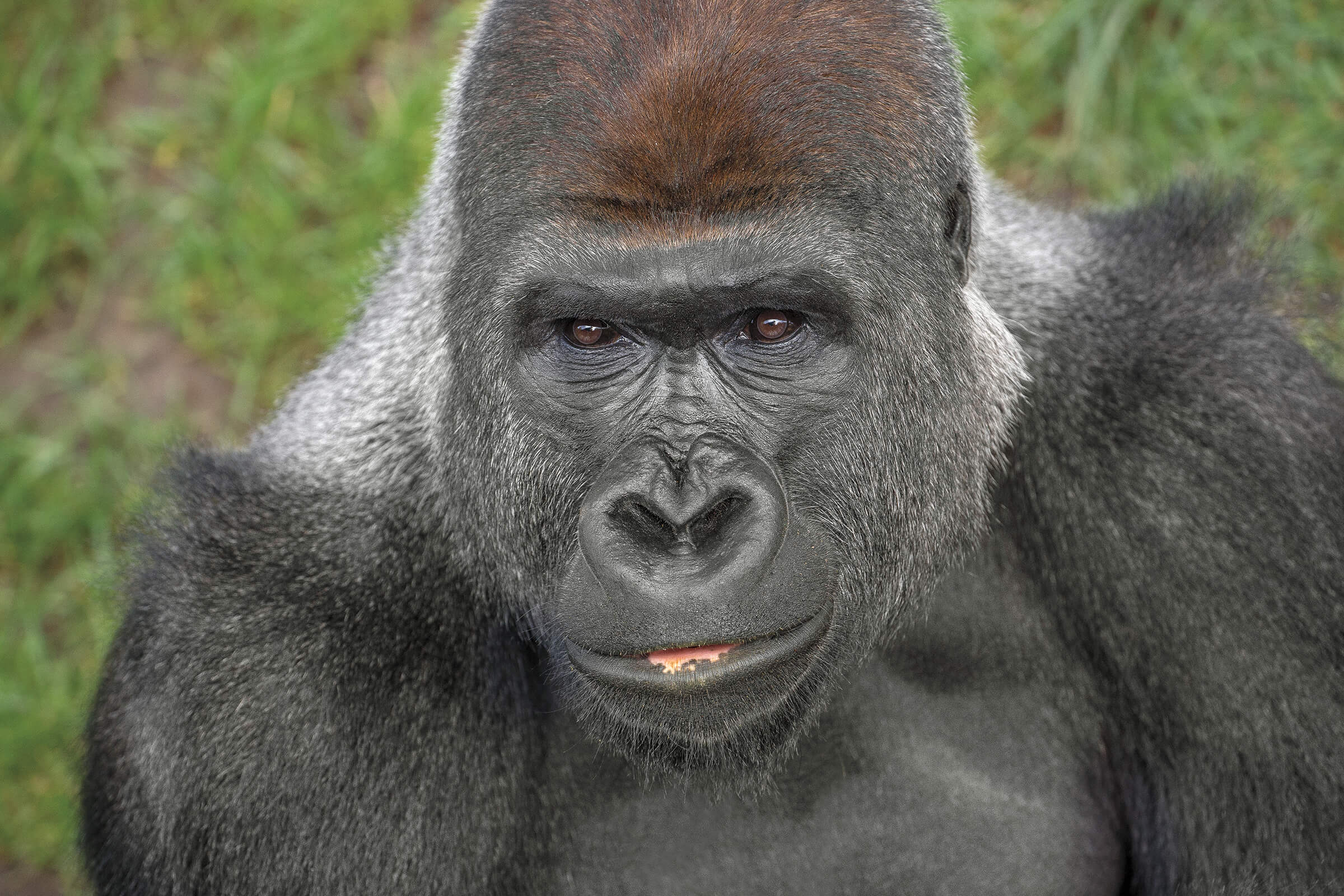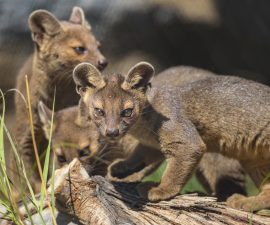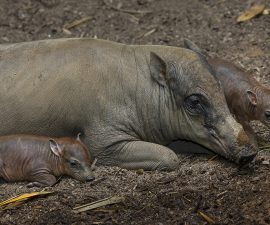BY Karyl Carmignani
Photography by Ken Bohn
In the cool of morning, as visitors stream into the San Diego Zoo, a family of gorillas explores the spacious exhibit for the day’s first tasty bounty. Breakfast-minded Paul Donn has a head of lettuce in each hand. His mate Jessica totes a swag of fresh browse as Denny—her sixth son—slides off her back and all but pirouettes his way over to his adoring public. Brushing 50 pounds now, the energetic 3.5-year-old is a sight to behold!
The San Diego Zoo is home to six western lowland gorillas that live in two naturalistic social groups. One is a family unit consisting of Jessica, Denny, and her handsome, 390-pound silverback, Paul Donn. Another female from the group, Ndjia, recently moved to the Los Angeles Zoo on a breeding loan. In the wild, males leave their natal group and often form loose bachelor coalitions, and at the Zoo that all-male consortium is made up of brothers Maka, Mandazzi, and Ekuba.
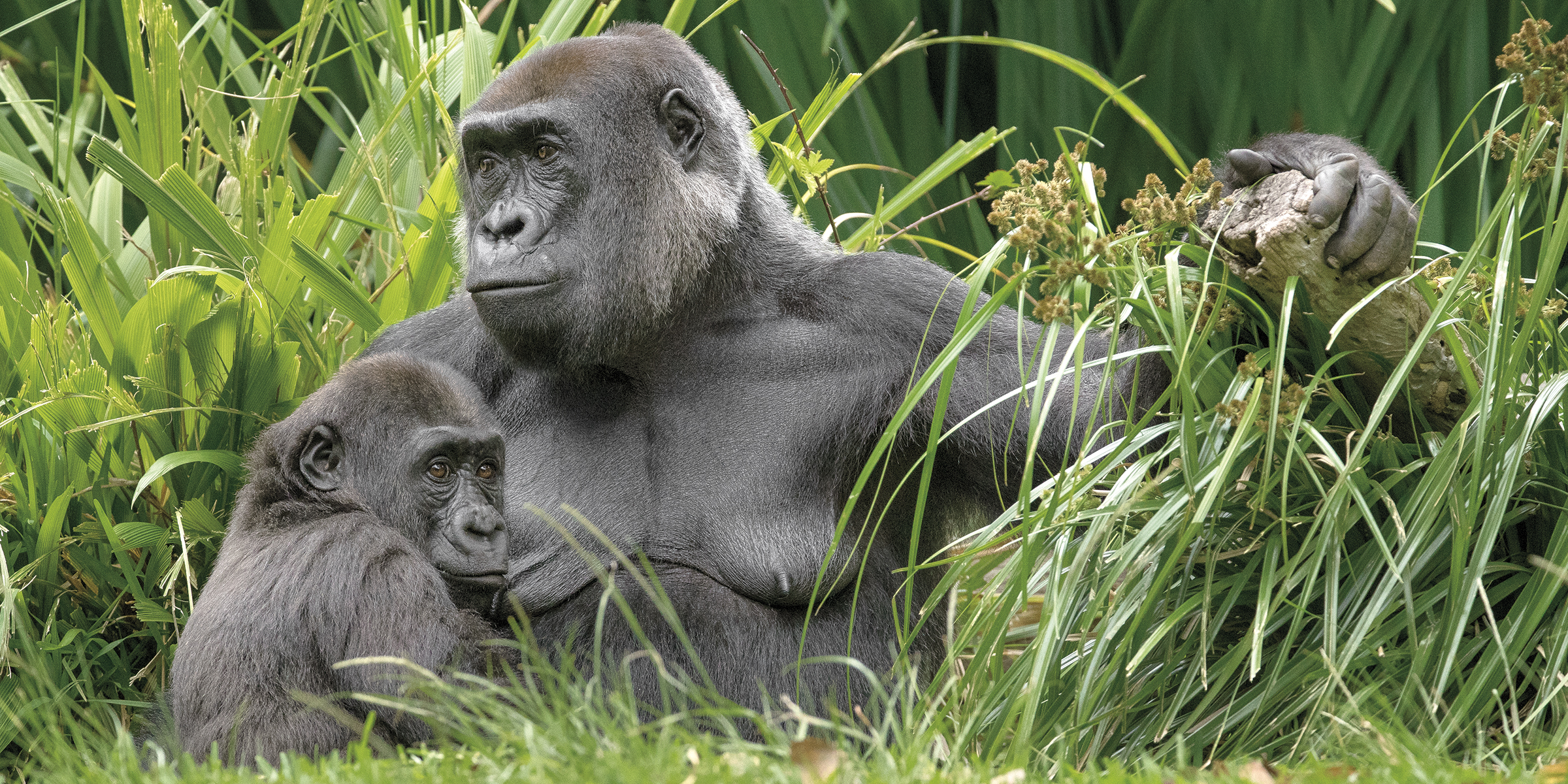
Living the Gorilla Life
Like other great apes, each gorilla has its own distinct personality, intelligence, and social graces that serve its social group, and keepers go to great lengths to keep the animals engaged. “Zookeeping is different than in decades past,” said Nerissa Foland, senior keeper, San Diego Zoo. “Today, the goal is to challenge the animals mentally and physically, so they can live full, vibrant lives.” Training sessions, enrichment items, and social interactions are some of the ways the gorillas get to use their smarts and stay healthy.
All of the gorillas are trained in over 20 husbandry behaviors that help keepers monitor their health closely. Before heading outside, each one demonstrates several behaviors that allow keepers a good, close look at them. They get tasty rewards like fruit and nuts for their cooperation. Even rambunctious little Denny presents his limbs, teeth, and back for inspection. From dry skin and hangnails to dental issues and skin lesions, keepers keep a close eye on their charges, and the gorillas are willing partners.
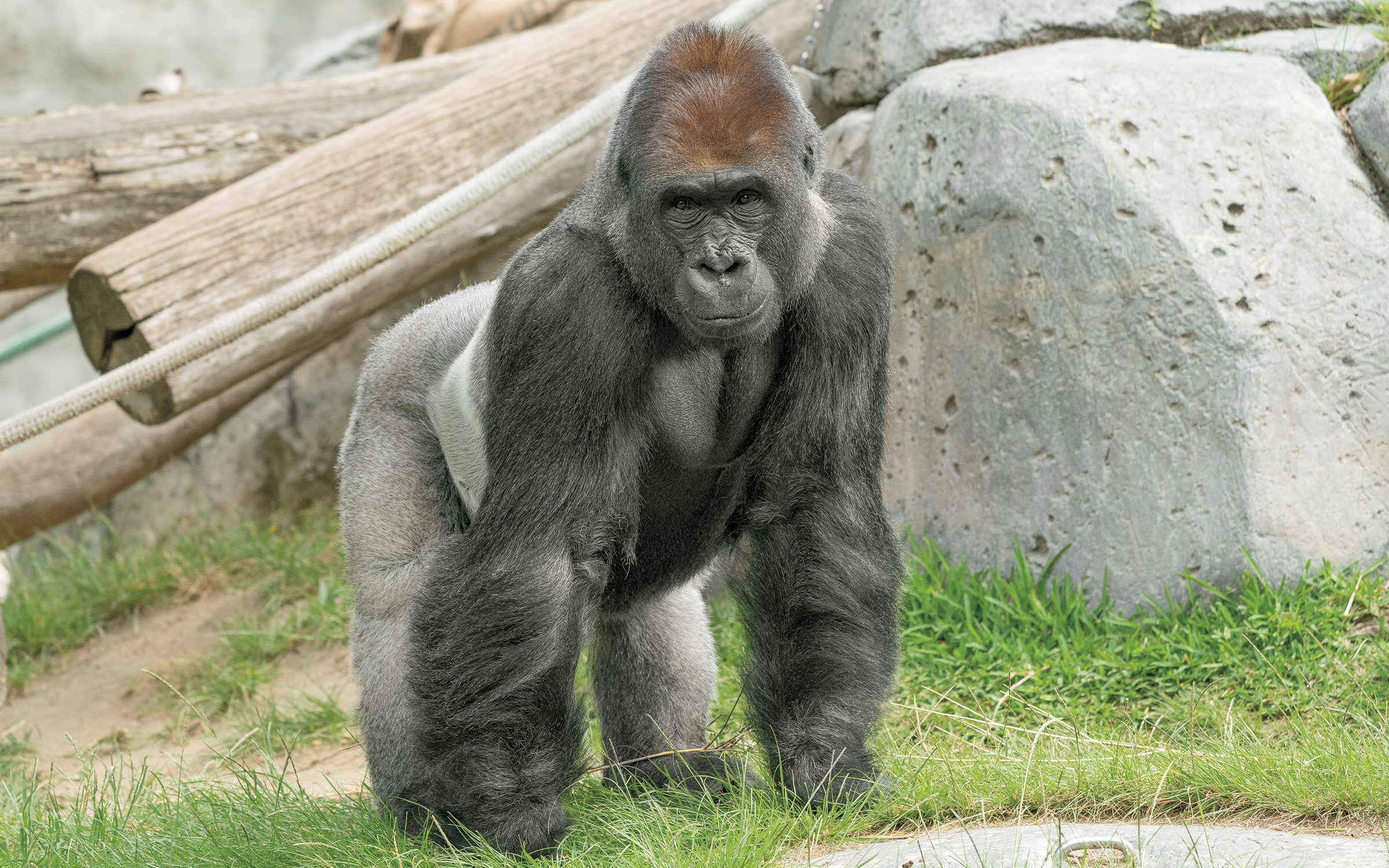
Heart Smart
Despite a vegetable-rich, high-fiber, low-fat diet, male gorillas in zoos can be struck down in their prime—the leading cause of death in male gorillas is cardiovascular disease. While gorilla hearts are quite similar to human hearts, we get very different types of heart disease. Humans are susceptible to plaque buildup from “bad” cholesterol that clogs arteries and heart function. Gorillas, in contrast, develop a gradual thickening of the heart muscles called fibrosing cardiomyopathy, which blocks electrical impulses and weakens the heart’s ability to pump blood. But heart medication for humans and gorillas is the same—beta blockers and ACE inhibitors, with the dosage adjusted to the animal’s size.
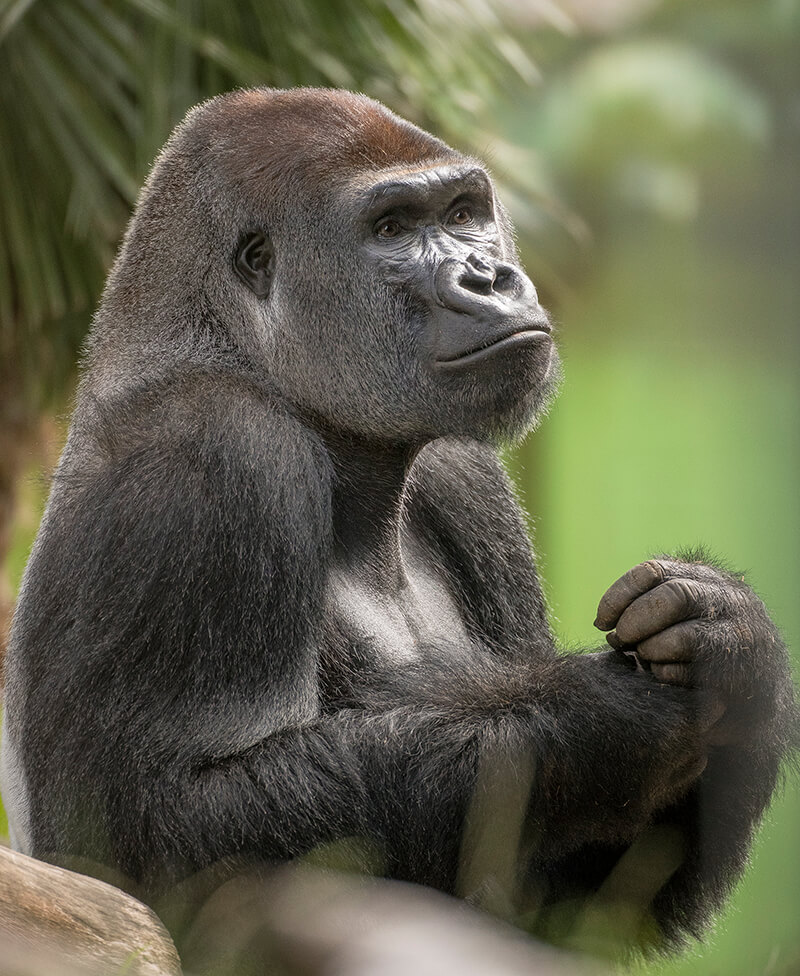
BOYS CLUB
The all-male troop is made up of Ekuba, Mandazzi, and Maka. They cooperate in training that benefits their own health, like participating in cardiac ultrasounds and blood pressure readings.
To preventatively manage heart disease, keepers patiently work with the gorillas using positive reinforcement, so the mighty apes will allow cardiac ultrasounds without anesthesia from a Zoo veterinarian. “They have to present and hold, and position, and even learn hand signals to move a few inches, so we could get the best images of the heart,” said Nerissa. Ever-enthusiastic Mandazzi is the star volunteer for the procedure, but the other three follow suit.
Since high blood pressure can be an indicator of heart disease, keepers are also training the gorillas to accept a blood pressure cuff and hold still while it inflates and deflates. “It takes a huge amount of trust on both sides of the mesh to cut off their circulation for a moment to get a reading,” said Nerissa. A 35-pound “sleeve” is placed on the enclosure for the gorilla to reach through. It takes a human thigh-sized cuff to go on the ape’s forearm. Nerissa said that despite his brawn, Paul Donn barely tolerates any pressure, but Maka is fine with it. “He’s a rock star,” she added. Good thing, since he has a heart condition, so it’s important to keep an eye on him. The other “boys” have a way to go in their training.
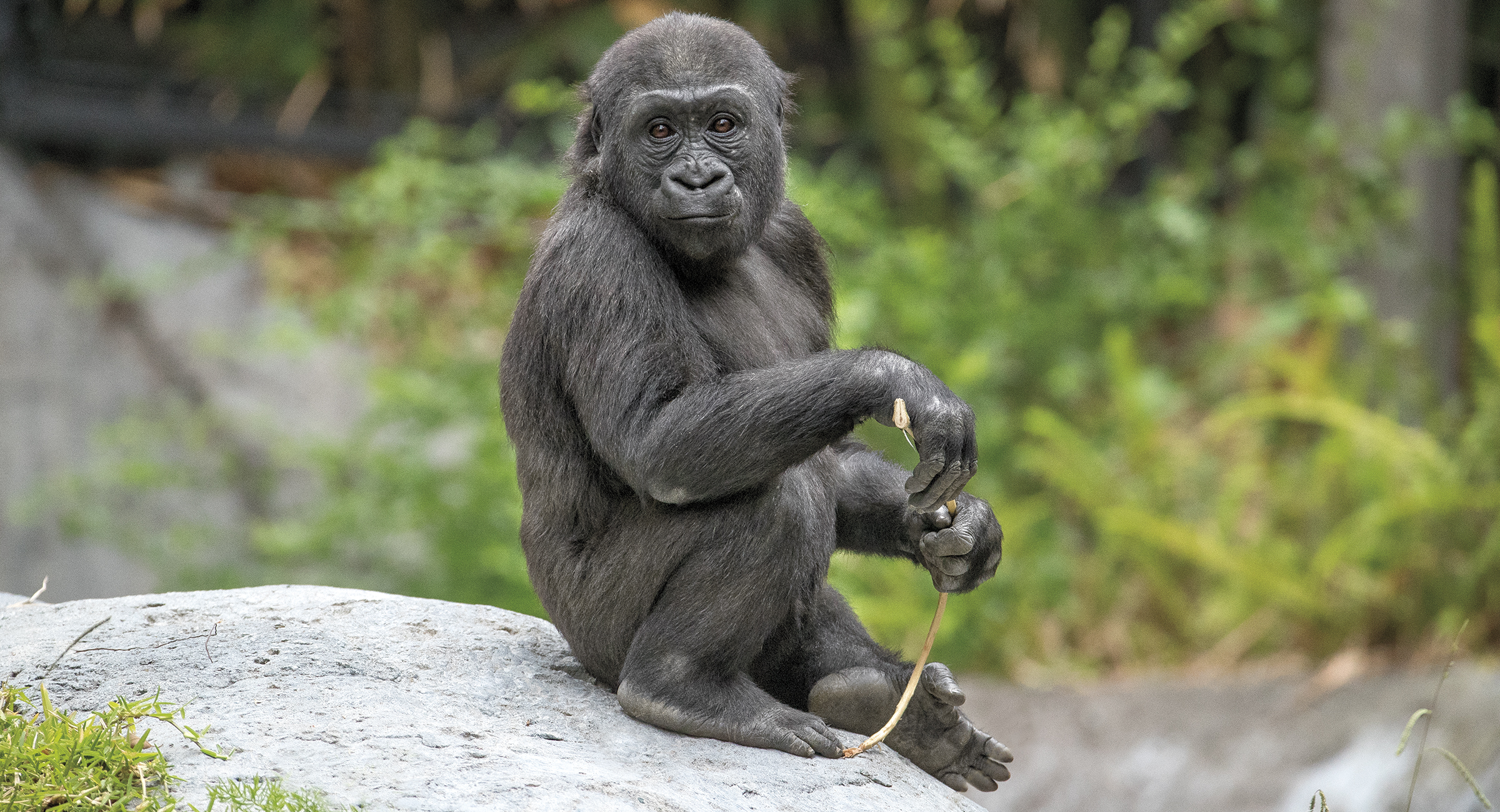
At the Ready
Another type of training involves all of the gorillas: Emergency Recall. Should something dramatic and unexpected occur, like an earthquake or something falling into their exhibit, a special audio signal is given, and no matter what is happening, the gorillas must “storm the castle” and come inside. It’s a different kind of training, as the super high-value reward—fruit cocktail in syrup, which they love but otherwise never get—elicits an urgent response. “We want to make it more important to come inside than to be near the dangerous situation,” said Nerissa. “Now, even the bachelors fly toward the building when they hear the signal!”
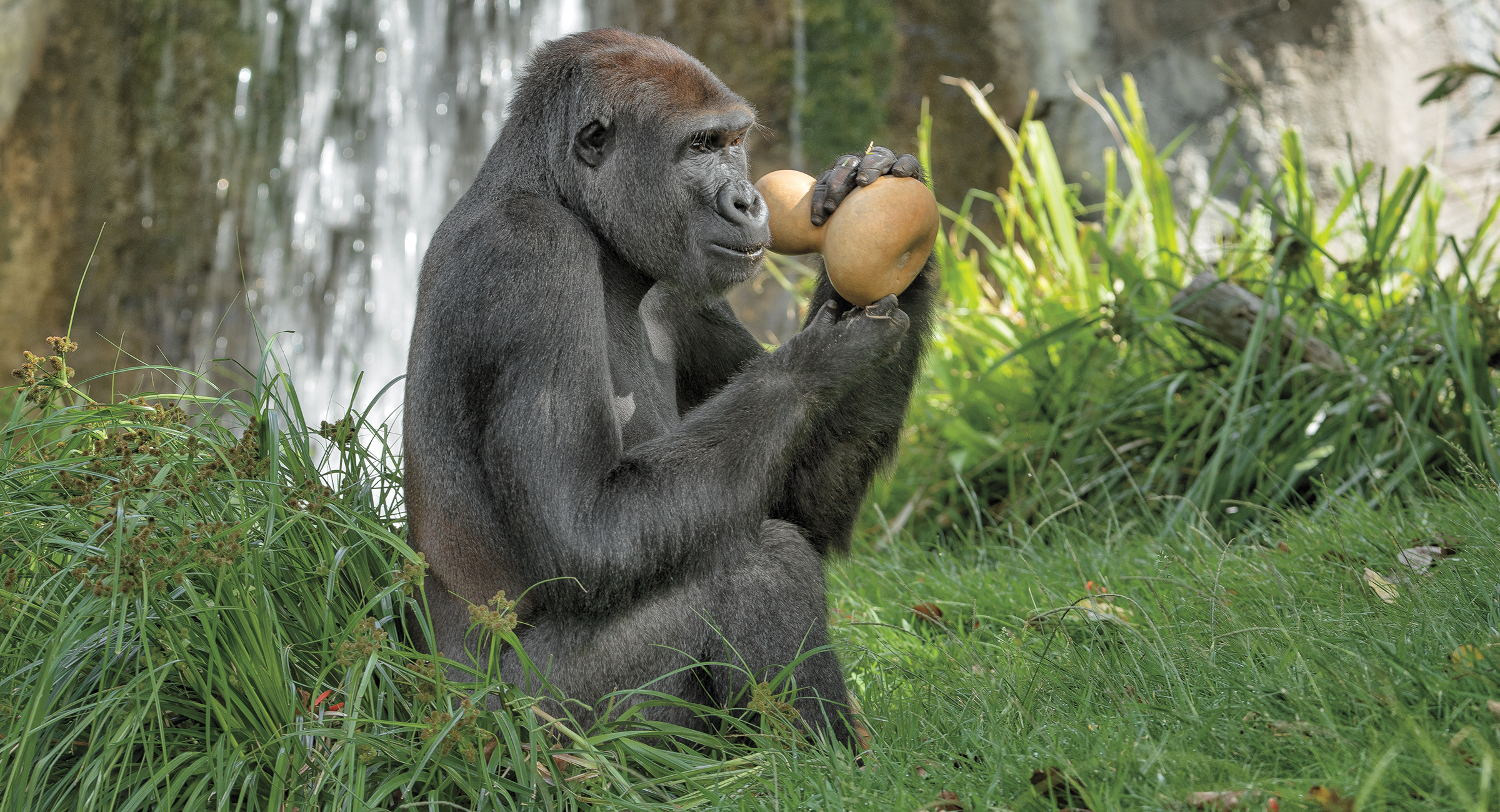
Rich Enrichment
A creative cadre of “enrichment volunteers” helps keep things interesting for the gorillas by making fun items like painted gourds, boxes, and papier-mâché; perfume-scented pine cones; bamboo cups for gelatin or peanut butter; frozen juice balls; grooved boards smeared with oatmeal or baby food; and palm husk baskets. They even take special orders for birthdays and holidays, so the gorillas can delight in and explore festive surprises. “It’s great because the keepers can ‘grab and go’ from the enrichment items,” said Nerissa. “We really appreciate our volunteers!”
In addition to tasty (if you’re a gorilla) fresh browse, the keepers do random “food scatters” with vegetables, raisins, or cereal throughout the day, so the gorillas can forage as they would in the wild. The apes also enjoy amenities in their bedrooms like nature DVDs, a bubble maker, and a sound machine. “If I came back as an animal, I’d want to be a gorilla at the San Diego Zoo,” said Nerissa, with a chuckle.
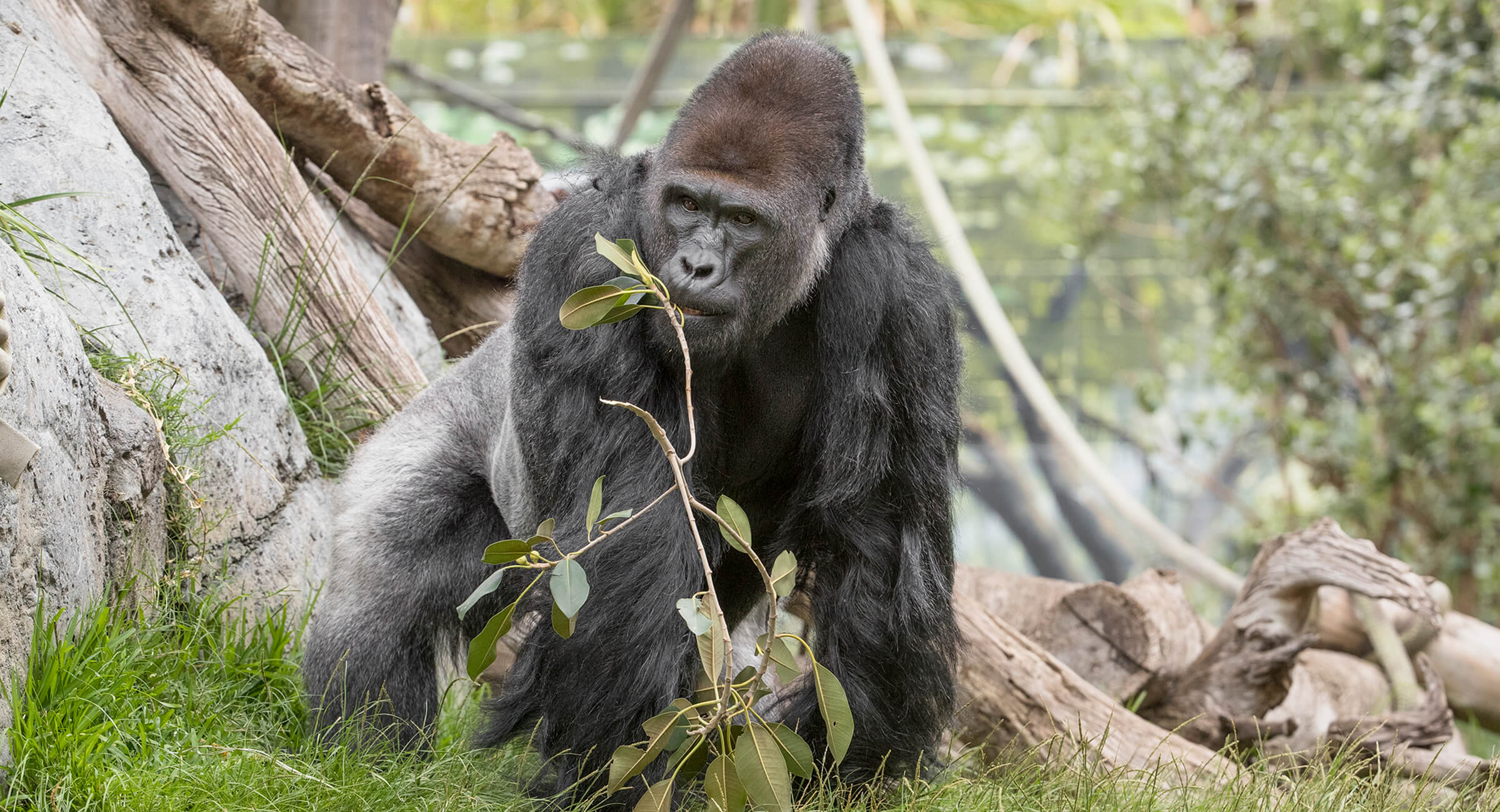
Changes in Attitude
After Ndjia left for the Los Angeles Zoo last May, it seemed that mellow, 16-year-old Mandazzi was “exhibiting behaviors as though looking for her,” said Nerissa. Though not part of his bachelor troop, Mandazzi had been showing interest in her from afar. It’s a big transition when someone leaves the group, but at 24 years old, it is important that Ndjia have the opportunity to breed and help her critically endangered species. Over time, the gorillas have accepted her absence. Twenty-three-year old Maka thinks he’s in charge of the bachelor troop, despite Mandazzi outweighing him by about 75 pounds. Apparently, Mandazzi would rather be mellow than boss! Interestingly, 12-year-old Ekuba actually directs things, said Nerissa. He has a clever understanding of his elders and by supporting the underdog, maintains a balance of power between the males. “Ekuba isn’t big enough to take over, but he runs the show from behind the scenes,” observed Nerissa.
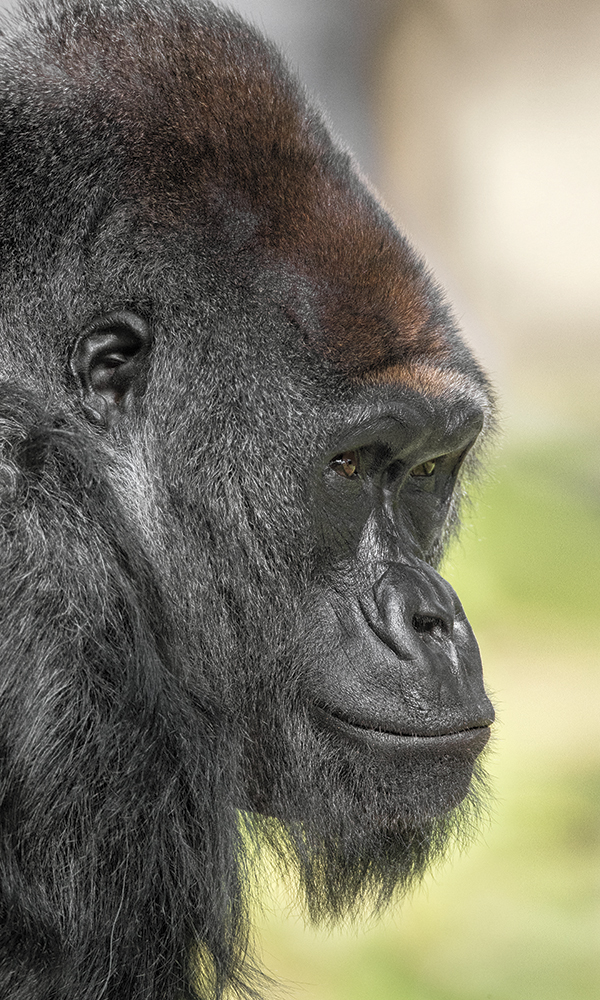
DID YOU KNOW?
You can help save gorillas in Africa. Each cell phone contains the element tantalum, which is refined from coltan ore that is mined from gorilla habitat. It can be reused if the device is recycled responsibly.
Western lowland gorillas Gorilla gorilla gorilla are part of the Association of Zoos and Aquariums’ Gorilla Species Survival Plan (SSP), and 51 accredited zoos managing lowland gorillas strive to ensure the genetic and demographic health of the population in managed care.
Additionally, the SSP serves to advance the care of zoo gorillas, deepen scientific knowledge about this species, educate the public about critical issues surrounding their survival, and work with other organizations to protect and improve the lives of wild populations.
San Diego Zoo Global is committed to conserving gorillas, and we are proud to be a part of the Great Ape Heart Project. Our staff’s commitment to training these great apes to participate in blood pressure readings and cardiac ultrasounds will reap far-reaching benefits to the cardiac health of gorillas for generations to come. San Diego Zoo visitors can discover the personalities, antics, and social bonds of gorillas firsthand, and appreciate the greatness of these great apes.

